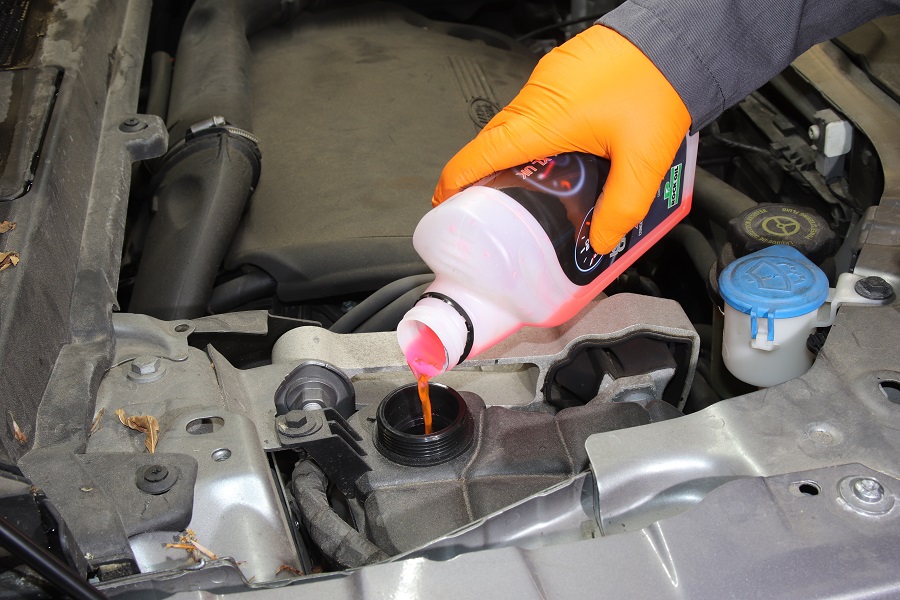What’s the difference between OAT, IAT, MEG and MPG? What tools can test coolant? Here’s our engine coolant guide with all you need to know.
Engine coolant (also known as antifreeze) has a hard life and a demanding job, and as a result, should be part of your routine car maintenance.
What does engine coolant do?
In winter, it needs to cope with freezing temperatures to avoid the risk of turning into a solid. Freezing-up can cause internal damage to the engine, such as fracturing a waterway and causing it to leak. During the summer, it needs to maintain the engine’s temperature to ensure it doesn’t get too hot. Plus, the coolant needs to prevent internal corrosion of the engine. Internal corrosion can result in porous waterways and a build-up of silt that blocks outlets and the water pump.
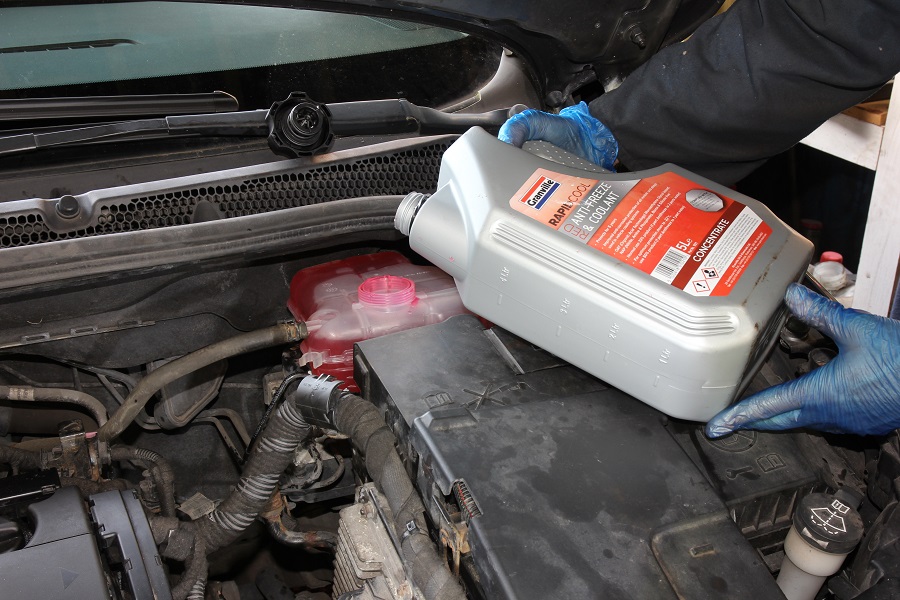
What is OAT, IAT, MEG or MPG engine coolant?
There are a number of abbreviations concerning coolant. Knowing what they mean can help to understand what you need to use.
- OAT stands for organic acid technology, although sometimes it’s called organic additive technology. It contains organic acid corrosion inhibitors such as carboxylates and triazole. This is a type of coolant that’s usually pink-colored and used in modern engines. It generally lasts for around six years before it should be drained and refreshed, but some products are for life.
- IAT stands for inorganic additive technology and it’s usually used in the blue-colored coolant for older engines. It means the chemicals added to the coolant that protect against corrosion are inorganic in nature. Examples include borates, silicates and nitrates. Inorganic chemicals are mined from the earth and refined.
- MEG stands for monoethylene glycol, which is an organic compound. It lowers the freezing point and raises the boiling point of the water it’s mixed with.
- MPG (when it comes to coolant) stands for monopropylene glycol, not miles per gallon. Just like MEG, it’s an organic compound and used in the same way for coolant. However, unlike MEG, MPG is non-toxic. Consequently, it’s used in industrial cooling systems around food production.
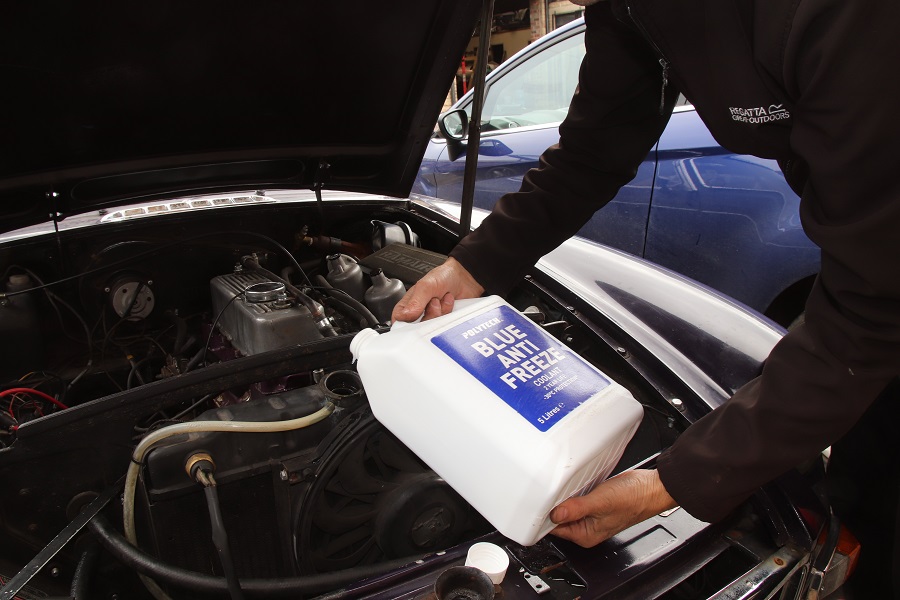
Which color coolant should you get?
Traditionally, blue-colored coolant is for older engines. It lasts for a couple of years before it should be drained and refreshed. Pink-colored coolant is for modern engines and, as mentioned, lasts for around six years, but some is for life. Confusingly, there’s also green-colored coolant, which may be a nitrite-free hybrid liquid that’s used in some classic Jaguars.
So unfortunately, this color recognition doesn’t always work. The color is only for cosmetic purposes, so unless you know what’s been used, you can’t tell what’s in it.
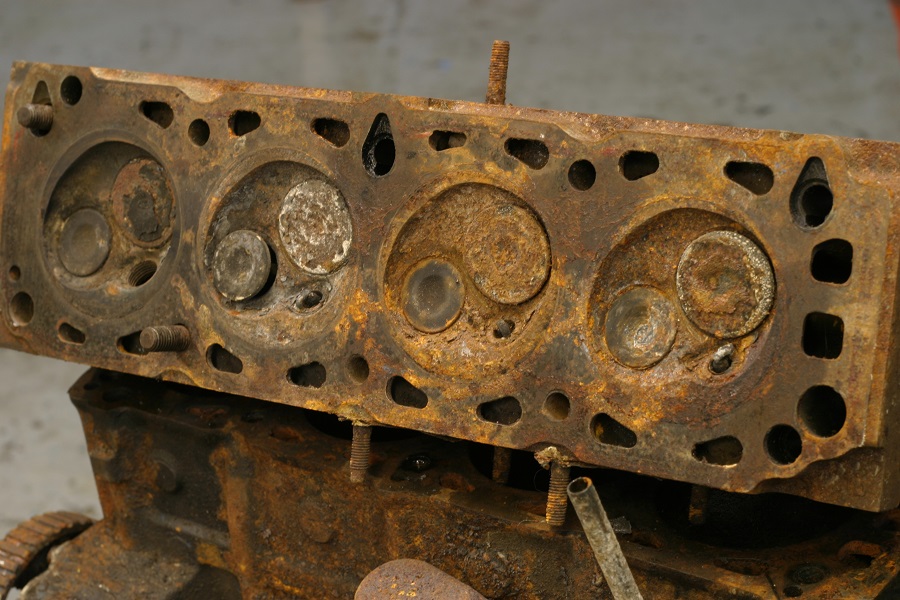
Long lasting engine coolant
Some OAT coolants have a longer lifespan than the typical six years. This is because of the low depletion of its corrosion inhibitors (e.g. carboxylate acid). So if they don’t deplete, then the coolant continues to prevent corrosion. Similarly, its freezing and boiling points remain suitably low and high.
Engine coolant and corrosion protection
Corrosion protection is a very important job for coolant, just as important as preventing freezing and boiling. A layer of those rust inhibitors form on metal surfaces where there’s the risk of corrosion.
Inside the waterways of an engine, there are several areas where corrosion can emerge. For instance, where an aluminum cylinder head makes contact with a cast iron engine block. Another example is where cylinder head studs travel through the coolant, and generally throughout an aluminum block or head.
The effects of corrosion can be disastrous. Aluminum can turn porous, resulting in coolant leaking out of the engine or into a combustion chamber. A rusted cylinder head stud can mean the cylinder head is difficult to remove. Similarly, corrosion between aluminum and cast iron can make it difficult to separate components such as a water pump. A corroded steel coolant pipe can spring a leak. And rust particles can block waterways, the water pump, thermostat and radiator, resulting in overheating.
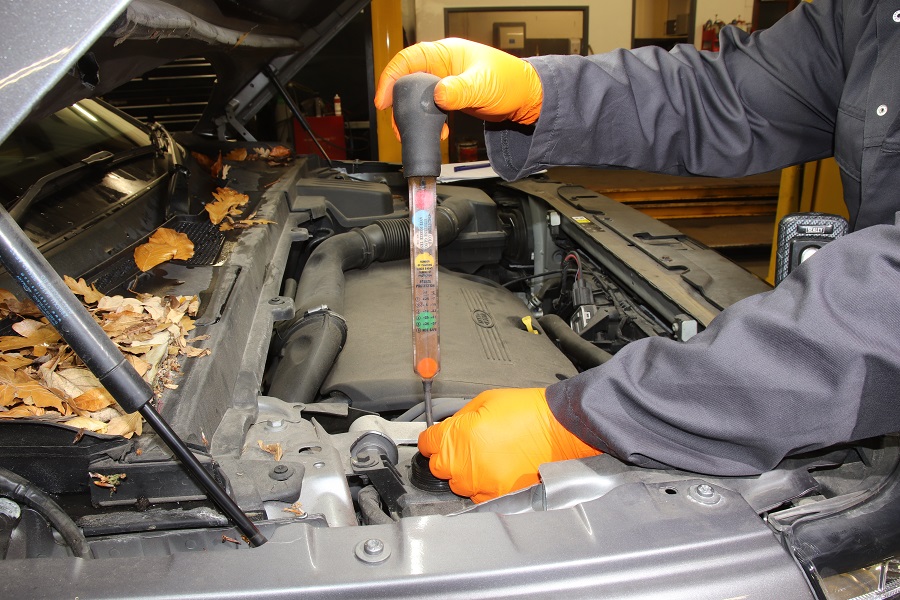
How to test engine coolant
The boiling and freezing capacity of coolant can be checked with an antifreeze tester. These vary in price, but most are under $20. The cheaper coolant testers extract a sample of coolant and a floating gauge measures its freezing and boiling points. A refractometer is a little more expensive, but is regarded as being more accurate.
Whilst an antifreeze tester will measure the temperature range of the coolant, it doesn’t help to check how effective it is at preventing corrosion. So if you are unsure about the age of your engine’s coolant, drain and replenish it. Similarly, if you don’t know what type of coolant is inside your engine, it may be worthwhile changing it. Don’t rely on its color to identify it.
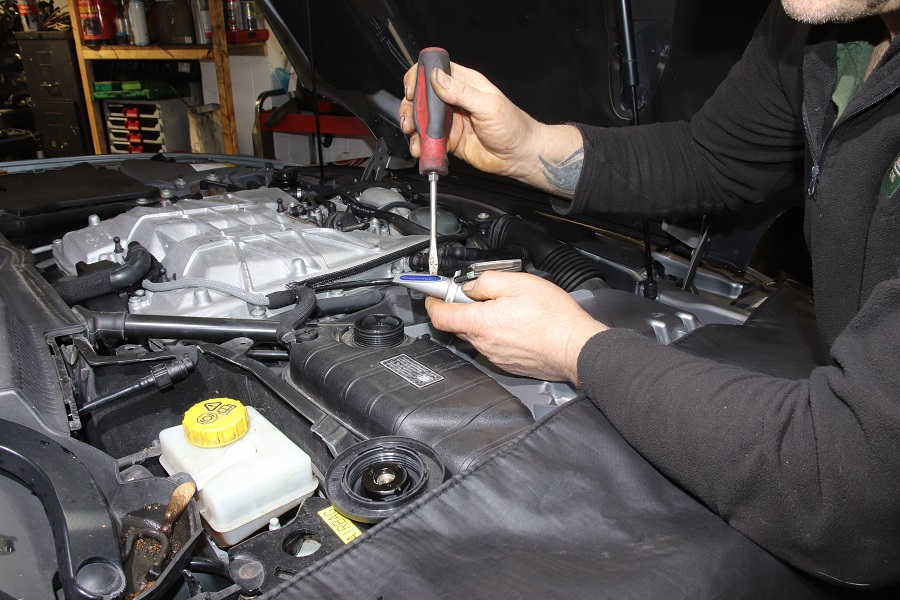
What happens if you mix different engine coolants?
If you’re unsure what type of coolant is in your engine, it’s difficult to choose a product for topping up. And in some cases, it can cause major problems. Mixing the typically blue-colored coolant with pink can cause the liquid to congeal. The congealed residue can block waterways and the water pump.
Even if you know what type of coolant is used in your engine, be careful with how it’s diluted. Too much neat coolant doesn’t help to further lower the freezing point and raise the boiling point. It needs to be diluted to around 50:50 in most cases.
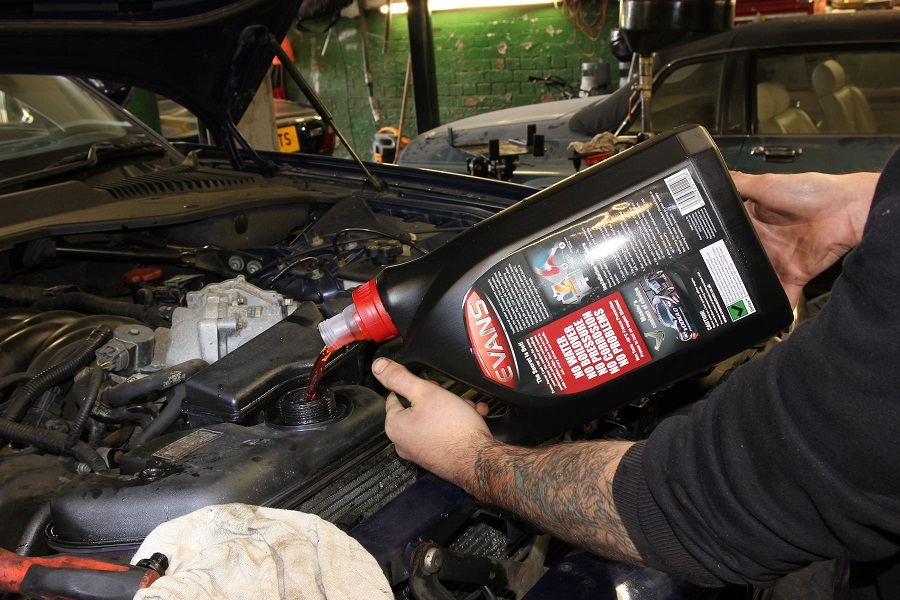
Coolant upgrades and alternatives
Products like Motul MoCool helps to reduce the coolant temperature by up to 59 degrees Fahrenheit (15°C). It does this by improving thermal exchange and the efficiency of the cooling system. It’s a non-glycol-based additive for use in race engines where a glycol-based product cannot be used. In such circumstances, the engine may only be run for a few minutes, such as at a sprint or hill climb event, so the cooling system may be very simple with no water pump to help maximize engine power.
Products like Evans Waterless coolant have a boiling point above 375 degrees Fahrenheit (190°C). It also operates at a lower pressure than traditional coolant. Switching to it requires all traces of water to be removed from the engine using a Prep Fluid. And water cannot be added to the engine if the coolant level is low.
Be sure to check out our best engine coolant guide in 2023 for buying advice.

